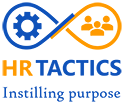The Right Approach to Employee Engagement

The importance of employee well-being is being realized by businesses around the world. One of the major elements of achieving this is employee engagement. If done in the right way, it can significantly impact business success. From the time a candidate applies for a job, to their interview, selection and employment tenure, employee engagement is significant at every step. These days companies are focusing on building a brand image and creating a great first impression. This helps not only in retaining existing employees but also in attracting new talent.
Over my 17 years of experience as an HR professional, I have closely worked with companies to set up successful employee engagement strategies. This has led me to devise a holistic methodology that puts employee well-being at the center of business, that ultimately translates into value for the business.
The HR Tactics Employee Engagement Methodology

Survey
Communication is essential in any business activity, and the same holds true for employee engagement. Employee engagement surveys are a series of carefully designed questionnaires, aimed at gaining and insight into the factors that are engaging and disengaging for employees. These surveys are confidential and serve as a learning tool to uncover good practices as well as issues in employee engagement at an organization-wide scale. These surveys include elements like work, team and organizational activities, to name a few. These surveys are uniquely fitted to an organization, based on the preliminary evaluation done by HR Tactics and the specific needs.
Benchmarking
The foremost thing after survey collection is to benchmark employee engagement. In this activity, the rate of employee engagement and disengagement is studied. This is then correlated to the goals of the company. It should be noted that benchmarking and employee engagement is an ongoing process that needs to be evaluated at regular intervals. With the change in communication styles, needs of demand and the business, employee engagement activities will have to evolve. For example, the need for online engagement, activities like home delivery of appreciation or welcome gifts, is a trend that has caught on recently due to the pandemic. Companies not following suit will lose out on the employee engagement front.
Identify Pillars Most Impacted
Benchmarking and survey results are thoroughly studied to identify which areas of employee engagement are most impacted by the current strategy. Before taking any corrective action, there is a need to specify key drivers and impediments to employee engagement. These will give a clear direction for further engagement activities. At HR Tactics, we call these Pillars of Employee Engagement. Most of the time, there is a lack of clarity regarding what is causing disengagement among employees. A targeted approach, based on these pillars of engagement, provide actionable information that can be leveraged to improve or introduce new strategies. These pillars are

- Alignment :
Are employees aligned with the goals and objectives of the organization? Employees should feel a sense of purpose and belonging to be able to contribute to the success of the business. - Relationship:
How are employee relationships within teams and the overall organization? A healthy and conducive work environment directly impacts employee engagement and in turn, productivity. These positive relationships not only refer to those between peers and managers, but also the leadership. - HR Policies:
Are HR policies of the organization employee-centric or evolving as per business dynamics? HR policies govern the day-to-day activities of employees and should instill confidence that the organization cares about the mental, physical and economic well-being of employees. These should not be solely business-centric but need to accommodate employees’ interests as a priority, which will affect employee engagement positively.
Plan of Action
The plan of action lays out the actual solutions for employee engagement and how to implement them. The plan is based on the identified pillars. In some cases, it is also a good idea to involve focused groups to brainstorm and suggest the best solutions. This way employees can be directly involved in the employee engagement plan to make it best suited for them. The aim is to define actions and assign responsibilities for implementation and monitoring, to ensure that the plan is carried through as envisioned.
It is also important to understand and incorporate the demographic differences within the organization. A company can have employees from different age groups, backgrounds etc. The unique preferences and requirements of these demographics need to be considered while creating a plan of action. For example, the expectations of a millennial employee will be vastly different compared to an employee from a baby boomer generation. Different methods and tactics need to be employed to cater to the varied generations within the organization.
Conclusion – Continuity and Consistency
Commitment to employee engagement flows from the top down. The leadership plays a pivotal role in ensuring the success of an employee engagement plan. Employee engagement is an important pillar of employee experience and the company’s success. Organizations must recognize the need for a comprehensive employee engagement plan and not ignore it. Creative and perceptive ways of involving employees and making them feel valued are the foundation of motivated and high-performance teams. Mature organizations around the world acknowledge this fact and work relentlessly towards it. A well-rounded employee engagement methodology will go a long way in making good organizations great. It should be noted that employee engagement is an ongoing and cyclic process to ensure that the organization is in line with the current needs of employees and the market.
